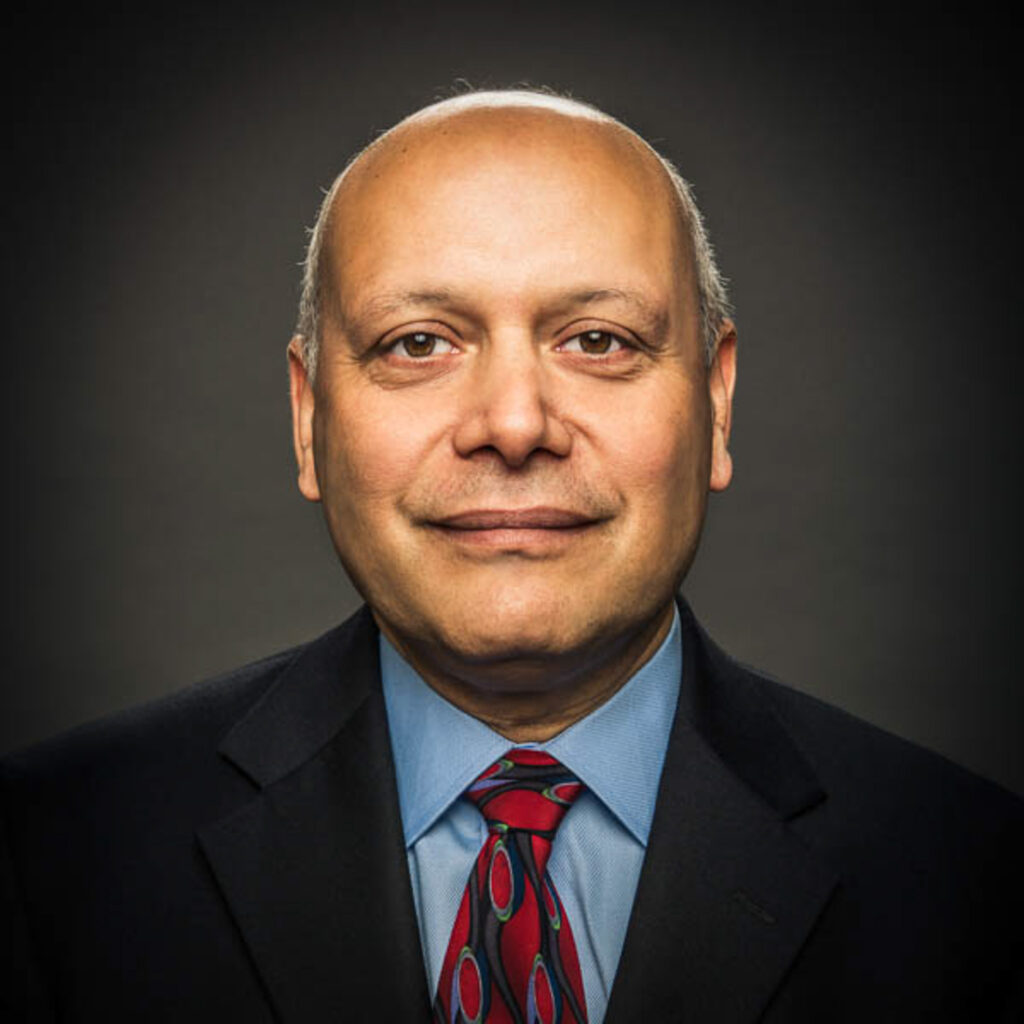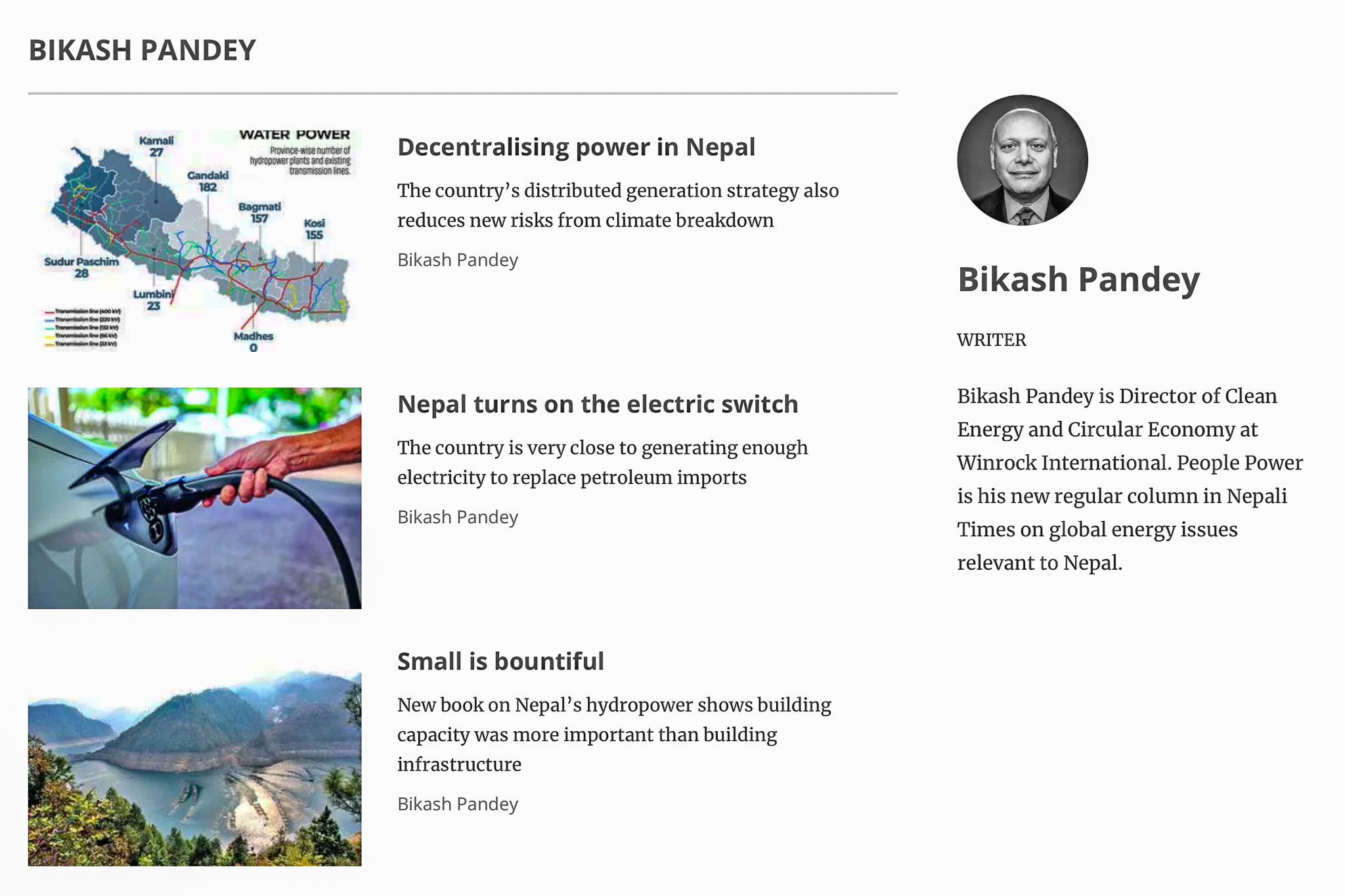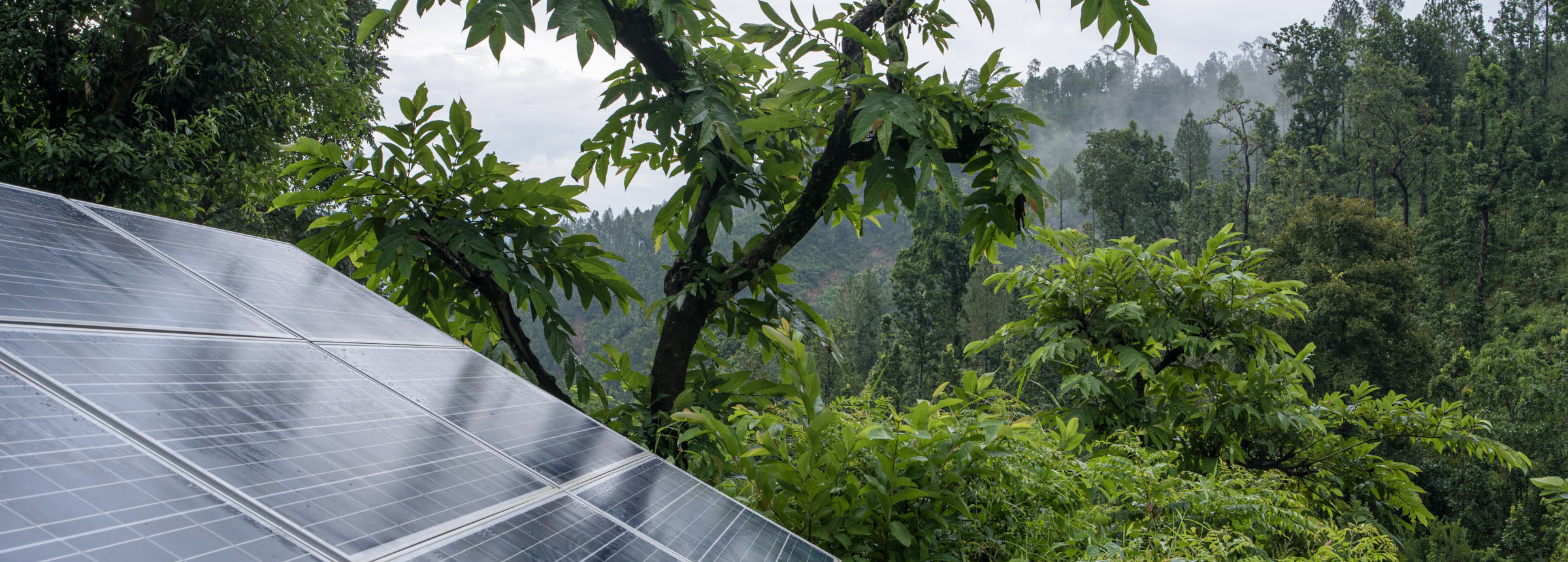Decentralizing power in Nepal: Distributed generation strategy reduces new risks from climate breakdown
"People Power:" Winrock's Director of Clean Energy & Circular Economy launches a regular column on global energy issues relevant to Nepal
Bikash Bandey
This column by Bikash Pandey was originally published in Nepali Times.
Nepal’s national electricity grid is supplied with power from a remarkably decentralised array of 162 hydropower projects and 14 solar photovoltaic schemes spread across 43 districts, supplying power over the grid to 30 million people.

Another 249 hydropower projects and 14 solar projects are at different stages of construction, positioning 11 new districts to contribute power to the grid by 2030. Six of the country’s seven provinces generate hydropower as their main energy source, while Madhes Province generates solar energy.
While NEA (Nepal Electricity Authority) and its subsidiaries own and operate 20 generation stations, the remaining are owned and operated by Independent Power Producers (IPP). All but two of the IPPs are Nepali companies that have successfully mobilised over $2 billion in investment.
This investment has been spread widely across the country. Eleven districts generate more than 100MW each with Dolakha, Lamjung, Solukhumbu, and Ramechhap each exceeding 200MW (map). The average size of hydropower projects on Nepal’s grid is 15.5MW, while the average solar project is 4.2MW.
The average size of projects under construction is larger — 39.5MW for hydro and 6.9MW for solar respectively.
For most hill and mountain districts, hydropower is easily the largest investment, private or public, in their history.
This decentralised power generation model is a relatively recent development for Nepal. In 1995 when the World Bank withdrew (adjoining article) its planned investment from the 201MW Arun III project, NEA had not envisioned the entry of the private sector. In fact, its published strategy was to mobilise international aid for hydropower projects larger than Arun III.
The well-known cancellation of Arun III in 1995 and the availability of alternative models led to Nepal’s decentralised power development. It matters that this distributed generation and storage of electricity is close to the point of use.
Centralised power stations have been the norm for industrialised and emerging economies to achieve rapid and cheap electrification, taking advantage of economies of scale of large power plants.
Also in Nepal, when its vast hydropower potential was first quantified in the 1960s, plans were drawn up for mega hydropower projects with reservoirs such as Karnali, Kosi, and Pancheswar. None of these could be realised, however, due to lack of financing.
Donor funds could never be aggregated at the scale needed for the investments required, and the country was not attractive to the international private sector. Nepal opted not to invite India to construct its large hydropower projects to supply the Indian market the way Bhutan did.
It took the country 40 years to find its way — generation led by private domestic investment supplemented by public sector involvement by the NEA.
The cancellation of Arun III resulted in the government signing expensive dollar-denominated power purchase agreements (PPA) with international producers like Khimti (60MW) and Bhote Kosi (45MW) to partially make up for the shortfall. These were against the wishes of NEA management.
It was in reaction to these expensive PPAs that engineers at NEA received permission to develop Chilime (20MW) with rupee-denominated PPA and the government at the time announced a standard tariff in NPR for power generated by IPPs.
Once NEA showed its willingness to sign these PPAs, hundreds of companies sprang up to apply for licenses to survey and construct small hydropower plants throughout the country.
Decentralised power development contributes to construction jobs and infrastructure investment, especially in remote districts where many of the best hydropower sites are located.
Construction of an electricity generation station provides at one go the two most important infrastructure any district needs to generate jobs — power and a road.
Decentralised generation provides energy security to load centres throughout the country since damage to power plants in one part of the country need not affect other areas that have their own generation. It also reduces transmission losses as large amounts of power do not have to be transported from one end of the country to another.

Nepal’s strategy of decentralised power development is coming to maturity in the era of the climate crisis, when the global response has been a surge in renewable energy investments and grids all over the world pushing to become decentralised.
Landslides, flooding and glacial lake outburst floods have always posed risks to infrastructure projects in the Himalaya, and climate breakdown has increased this risk with the severity and frequency of cloud bursts.
The 2024 monsoon has been particularly bad, temporarily shutting down NEA’s 456MW Upper Tamakosi, 60MW Upper Trisuli 3A, 40MW Chameliya, and 10MW Sunkosi projects,
It also downed the 36MW Balefi, 20MW Lower Modi, 18MW Middle Modi, and 7.5 MW Indrawati III operated by IPPs.
Nonetheless, there has not been any increase in load shedding because power plants across other river basins continued to generate without interruption.
Having power plants spread across two thirds of the country rather than concentrated in a few river valleys distributes the risk to the country’s entire power supply.
Adding solar energy to the generation mix diversifies the types of renewable energy available and contributes to power in the winter months. It also makes the grid more secure during periods of drought when hydropower production declines.
Solar energy is a perfect complement to hydro since by definition its production will peak during periods with low rainfall.
Distributed generation is shaping up to be an important component of Nepal’s decentralised energy system. This increases energy security to users and reduces transmission losses.
The roughly 10MW of rooftop solar PV systems that have been installed in the past year by hotels, factories, medical colleges and flour mills to reduce their electricity bills is an example of how it is catching on.
Decentralised and distributed generation do have additional costs in the need for more extensive power networks. Extending high voltage transmission lines to evacuate power from smaller local projects adds cost.
However, every power plant and the transmission line to access it has aided Nepal in accelerating electrification and strengthening power infrastructure to the district where it is located.
As networks become more complex, utility-scale battery storage, and the availability of distributed storage in electric vehicles, the grid needs to be made smarter to better manage the tens of thousands of generation and storage points Nepal is likely to have in the coming years.
Read more of Pandey’s columns here.
Related Projects

